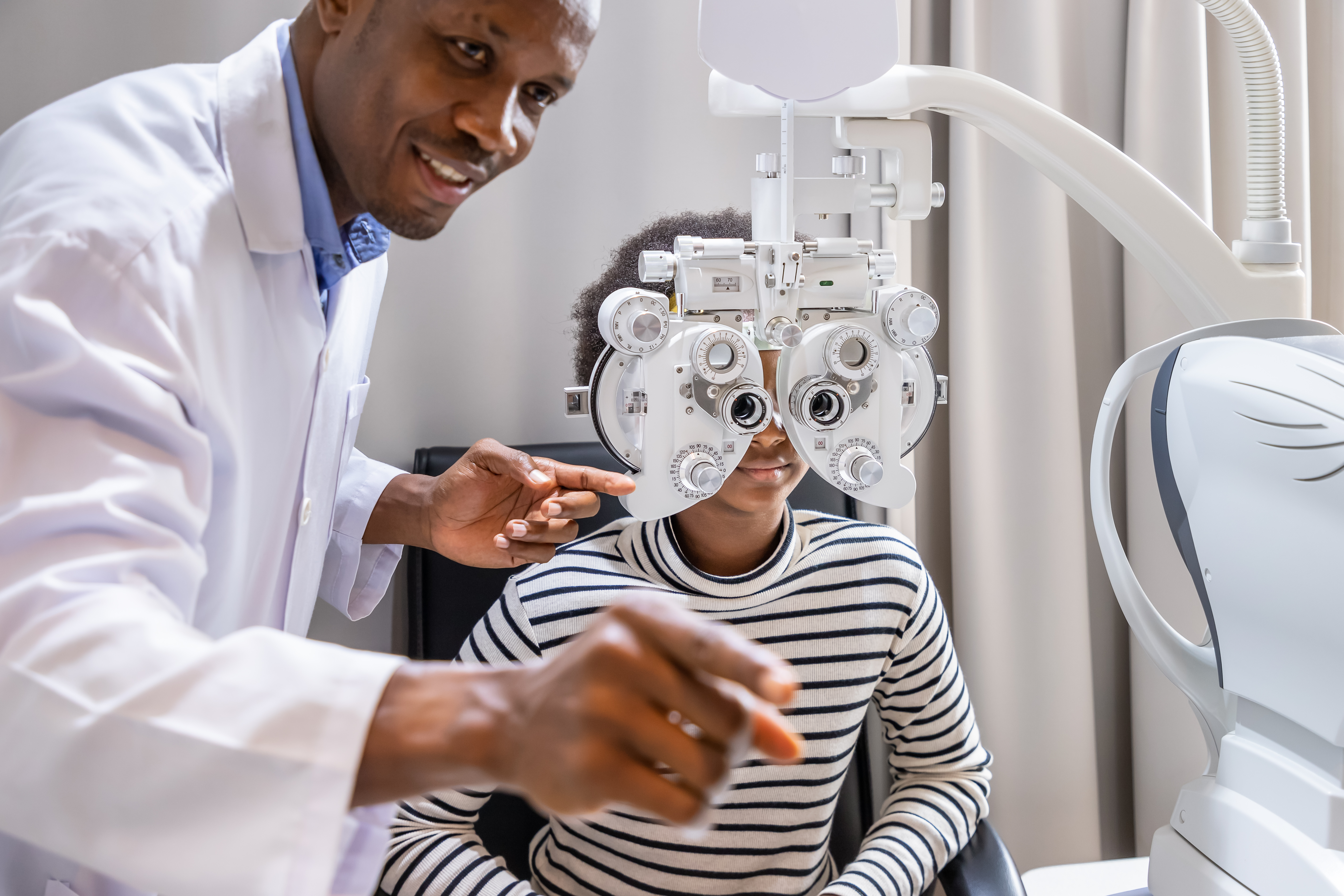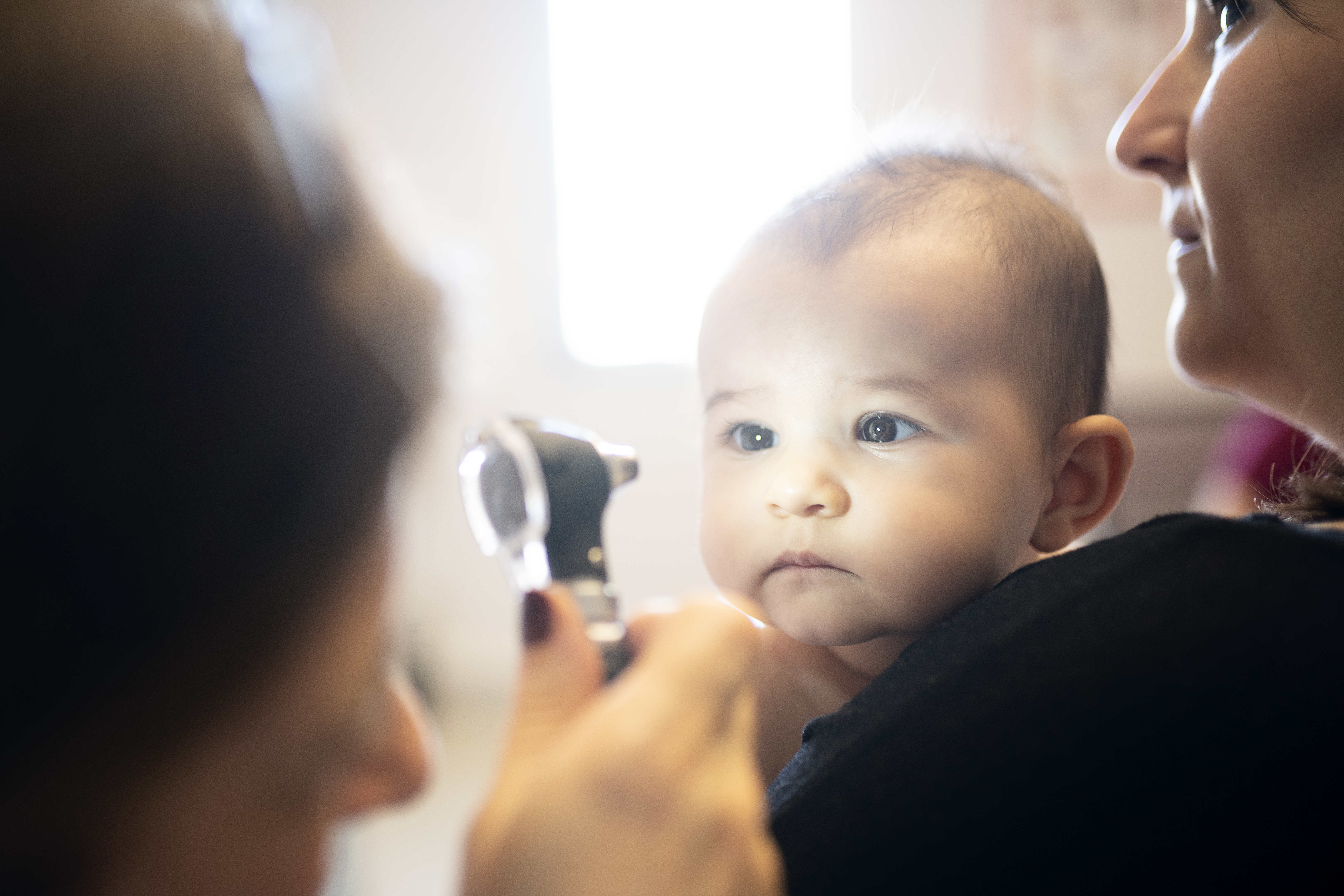When to have your child's eyes examined, and how to prepare them for their visit

As your child prepares to return to school, it’s especially important to keep an eye out for signs that they could be experiencing vision problems.
Ellen Van Norman is an optometrist who specializes in pediatric eye health for UK HealthCare. Below, she answers questions about the “whys” and “whens” of eye exams, and shares advice on how to prepare your child if they’re nervous about having their vision examined.
At what age should a child first have their eyes examined and how frequently thereafter should they be examined?
As a pediatric optometrist, I am of the belief that it is never “too early” to have an eye exam, especially if there is suspicion of a vision problem. If parents or guardians feel like their child (at any age) is exhibiting signs of eye issues, they should have their child seen by a pediatric eye care provider. We are able to examine children and tell if they need glasses or are at risk for needing glasses in the future, even before a child is verbal.
If there is no suspicion of a vision problem, I believe that a child should have their first eye exam at about age 5. The state of Kentucky requires all children entering public school to have a baseline eye exam before they are enrolled in kindergarten. We offer these “school exams” at UK Advanced Eye Care.
I recommend eye exams at least once every two years, if not annually, for school-aged children who have not been identified to have vision problems. For those who need glasses at a young age or who are identified as “borderline” for needing glasses during childhood, I recommend annual comprehensive eye exams.
What are some signs that a child might be at risk of, or already experiencing, eye issues?
Children who are experiencing eye issues can exhibit some “clues” that they are having trouble with their sight. Some of these are excessive blinking, excessive eye rubbing, and squinting. Sometimes these children hold devices and books too close to their face. They also can have balance issues or fall behind in school.
Children more at risk for developing eye issues are those with family members (parents, siblings, cousins, etc.) who had childhood vision issues, such as:
• Needing glasses early in life
• Eye crossing
• Eye drifting
• Poor vision even with glasses
A lot of eye conditions that present commonly in children run in families. However, children with vision issues often do not exhibit any signs or symptoms whatsoever. Therefore, it is important to get a comprehensive eye exam before they enter school.
What are the most common eye problems in children?
The most common eye problem in children is refractive error, which is a fancy term for “needing glasses.” A child can have hyperopia (far-sighted, where near vision can be blurry), myopia (near-sighted, where distance vision can be blurry) and astigmatism (where the corneal curvature is not perfectly round and causes light distortion at both distance and near). It is actually quite rare for a person to have absolutely no refractive error at all; most people have at least one of these conditions, but a significant amount of refractive error requires glasses.
Another common eye problem is strabismus. This is when one or both of the eyes can drift out towards a patient’s ear or they can cross in towards their nose. This can be constant or intermittent. The treatment for this could include glasses, patching one of the eyes for a portion of the day to make the other eye stronger, eye exercises or surgical correction. The treatment plan is developed by the doctor depending on the severity of the condition and the age of the patient.
We also commonly see amblyopia in children. A child’s brain continues to develop neural connections to the eyes until they are about 10 years old. Amblyopia is when these neural connections do not form properly to one or both of the eyes, causing blurred vision in that eye even with glasses. This can be caused from high refractive error or strabismus. It is treated with full-time glasses wear, patching one of the eyes or using eye drops in one of the eyes to allow the brain to form those important synapses to the weaker eye so that vision is equal between the two eyes.

How can parents ease any fears their children might have of eye examinations or wearing glasses?
It is important to tell children what to expect when they come to our clinic. If they know what the steps will be in their exam, it can ease anxiety.
In our clinic, we have the child start with the technician. The technician works with the child and their parent to collect data surrounding the child’s visual abilities. In school-age children, this includes:
• Reading the eye chart
• Checking color vision
• Depth perception
• Making sure all their eye muscles are aligned properly
We have a great team of technicians who make the entrance testing fun! After the entrance testing, we dilate our patients. It is important to dilate children because their focusing muscles are much stronger than those of adults, and without dilation, it is impossible to get an accurate assessment of their refractive error and eye health. Eye drops can be the most traumatic part of the exam for the child, but our team is excellent at comforting children and administering drops in the most painless way possible. The drops do take about 30 minutes to “kick in” after instillation, so bring an activity for the child while they wait. I suggest a tablet or small toys instead of books in this case, because their vision will be very blurry up close, which could lead to frustration.
Once the child is fully dilated they see the doctor, who measures their refractive error and eye health with a series of flashlights and lenses. Once all the data is collected, we discuss the treatment plan with the parent and child.
Some children are upset when they receive the news that they need glasses, while a surprising number of others are upset that they don’t need glasses. When a child expresses displeasure at the news that they need glasses, I always tell them how cool glasses are and that there are plenty of people who wear them. I always bring up relatable characters who wear glasses, such as Mirabel from Disney’s Encanto and Harry Potter. I also always ask them what color glasses they are going to get.
Including the child in deciding the style and color of their glasses will help with acceptance. The opticians at UK Optical Shop are experienced in working with families who have first-time glasses wearers and we carry many fun and whimsical children’s frames.
What key steps should parents take to minimize their child's risk of eye injury when preparing for return to school?
Educating our children is one of the best ways to prevent eye injury accidents. Telling them when certain activities are not safe is important. It is also important that we wear eye protection during certain dangerous tasks. I have seen many children suffer eye injuries due to rough play with Nerf guns, slingshots and other projectiles. Having children wear safety glasses when playing with potentially harmful projectile toys is key to protection during these early years.
It is also important to closely monitor children and teenagers who wear contact lenses. Contact lenses, though convenient, do put us at an increased risk of severe eye infections that could threaten vision. It is important to never sleep, swim or shower while wearing contact lenses, and to dispose of them when recommended by your doctor. Parents should monitor their child’s lens hygiene and help them create a schedule of when to dispose of lenses. It is also important to frequently replace contact lens cases and solution.
Is there anything else you'd like parents to know related to the eye health/safety of their child?
During the formative years of childhood, a child’s vision is one of the most important things to protect and maintain. After all, vision is important with early learning as well as reading and writing during elementary years and beyond. Sometimes, children can be struggling in school or with other activities because of an unknown vision problem.
It is important that children receive comprehensive eye examinations throughout childhood in order to preserve life-long, excellent vision.





